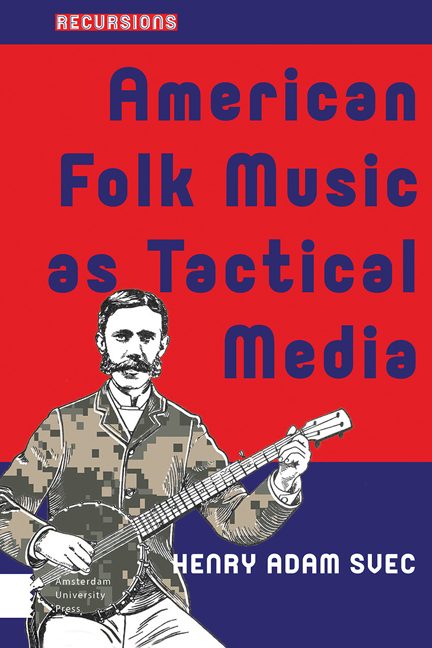Book contents
- Frontmatter
- Contents
- Acknowledgments
- Introduction
- 1 Alan Lomax’s Deep Rivers of Digitality
- 2 Pete Seeger’s Time-Biased Tactics
- 3 Bob Dylan’s Noisy Faces
- 4 A Folk Approach to Imaginary Media
- 5 Another Authentic Folk Is Possible
- 6 American Folk Music as Strategic Media
- Epilogue
- Notes
- Lyrical Credits
- References
- Index
6 - American Folk Music as Strategic Media
Published online by Cambridge University Press: 28 January 2021
- Frontmatter
- Contents
- Acknowledgments
- Introduction
- 1 Alan Lomax’s Deep Rivers of Digitality
- 2 Pete Seeger’s Time-Biased Tactics
- 3 Bob Dylan’s Noisy Faces
- 4 A Folk Approach to Imaginary Media
- 5 Another Authentic Folk Is Possible
- 6 American Folk Music as Strategic Media
- Epilogue
- Notes
- Lyrical Credits
- References
- Index
Summary
‘The story of American arts in the twenty-first century might be told in terms of the public reemergence of grassroots creativity as everyday people take advantage of new technologies that enable them to archive, annotate, appropriate, and recirculate media content. […] [T]his creative revolution has so far culminated with the Web. […]Once you have a reliable system of distribution, folk culture production begins to flourish again overnight.’
Henry Jenkins‘The theatre where Justin [Bieber] had his first brush with stardom was relatively small and had limited seating. Consequently, when Justin sent sparks flying with his performance of ‘3 AM’, a lot of his family and friends did not see it. That is when, in the spirit of sharing, Justin and his mother entered the YouTube age. […] Justin has acknowledged, “I just did that for my family and friends”, and that he was not expecting anything more to come of it.’
Marc Shapiro (from Justin Bieber: The Fever!)‘Sing. Play. Create. Share. Let's make music social.’
Smule.comBetter World A-Comin’…Online
In his introduction to Singing Out: An Oral History of America's Folk Music Revivals, David Dunaway divides the history of folk music revivalism in the United States into three periods. His first wave links a wide range of collectors, researchers, and activists from ethnographers in the late 19th century to the more overtly political and propagandizing efforts of Alan Lomax and others in the 1930s and 1940s; next is the ‘folk boom’, which featured the mass-commercial success in the 1950s of the Weavers and then the Kingston Trio. Happily, the folk revival has returned again in a third wave, according to Dunaway, beginning in the late 1980s and early 1990s, and the World Wide Web has been a key source of the new varieties of folk expression recently on offer: ‘They are pulling out songbooks or warped records from their parents’ folk revival, learning to play an instrument or two, and then performing for their MySpace friends or the virtual audience […]’.
- Type
- Chapter
- Information
- American Folk Music as Tactical Media , pp. 127 - 142Publisher: Amsterdam University PressPrint publication year: 2017



